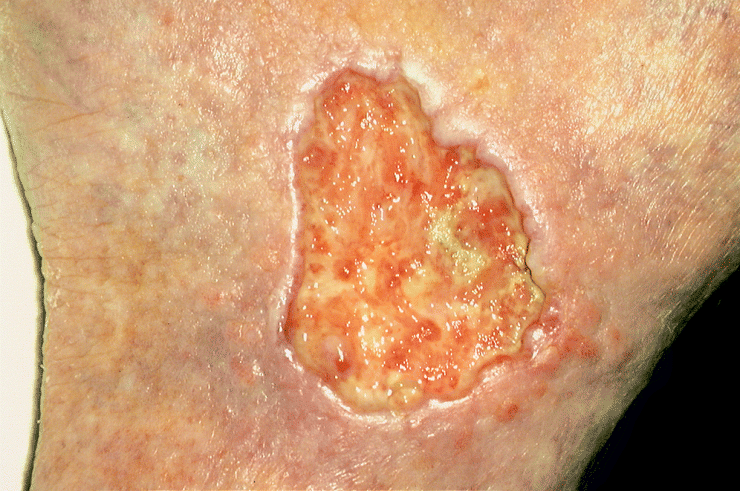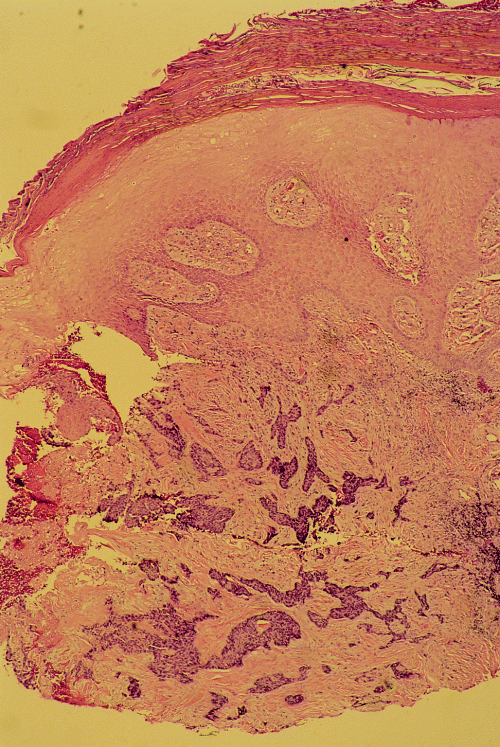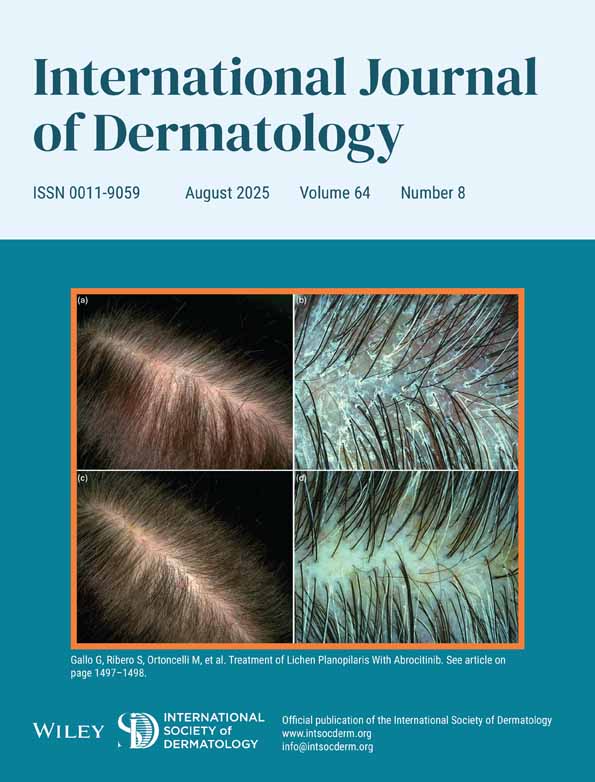Infiltrating basal cell carcinoma in the setting of a venous ulcer
Abstract
A 77-year-old man was referred with a 5-year history of an intermittently painful, nonhealing right medial ankle ulcer. The ulcer had not responded to multiple treatment modalities, including Unna boots, compression therapy, sclerotherapy, and split-thickness skin grafting.
The past medical history was significant for a deep venous thrombosis in the right leg 30 years earlier (treated with warfarin for 3 months) and a history of greater saphenous vein harvesting for coronary bypass grafting 28 years previously. After the vein stripping, the patient had suffered from increasing right leg edema and stasis changes in the right leg. His history was also remarkable for coronary artery disease, dyslipidemia, and lymphoma treated with chemotherapy 8 years before presentation, with no evidence of recurrence. He had stopped smoking approximately 20 years earlier. Medications included atenolol, simvastatin, nicardipine, nitroglycerin, and aspirin.
Skin examination revealed a 3.0 × 3.5-cm ulcer adjacent to the medial malleolus. The edges of the ulcer appeared raised and rolled ( Fig. 1). Centrally, there was granulation tissue, which appeared healthy. There were surrounding dermatitic changes. Dorsalis pedis and the posterior tibial pulses were normal.

of the ulcer
Noninvasive vascular studies revealed severe venous incompetence of the right popliteal and superficial veins. Arterial studies and transcutaneous oximetry were normal. Computed tomographic scan of the pelvis did not reveal any adenopathy, and radiographic imaging did not reveal any bony changes suggestive of osteomyelitis.
Biopsy of the ulcer edge and base showed infiltrating basal cell carcinoma ( Fig. 2). Mohs' micrographic surgery required three layers; the final extent of the ulcer was 7.8 × 6.9 cm. A split-thickness skin graft was placed.

section from biopsy specimen of edge/base of ulcer (hematoxylin and eosin; × 67)




